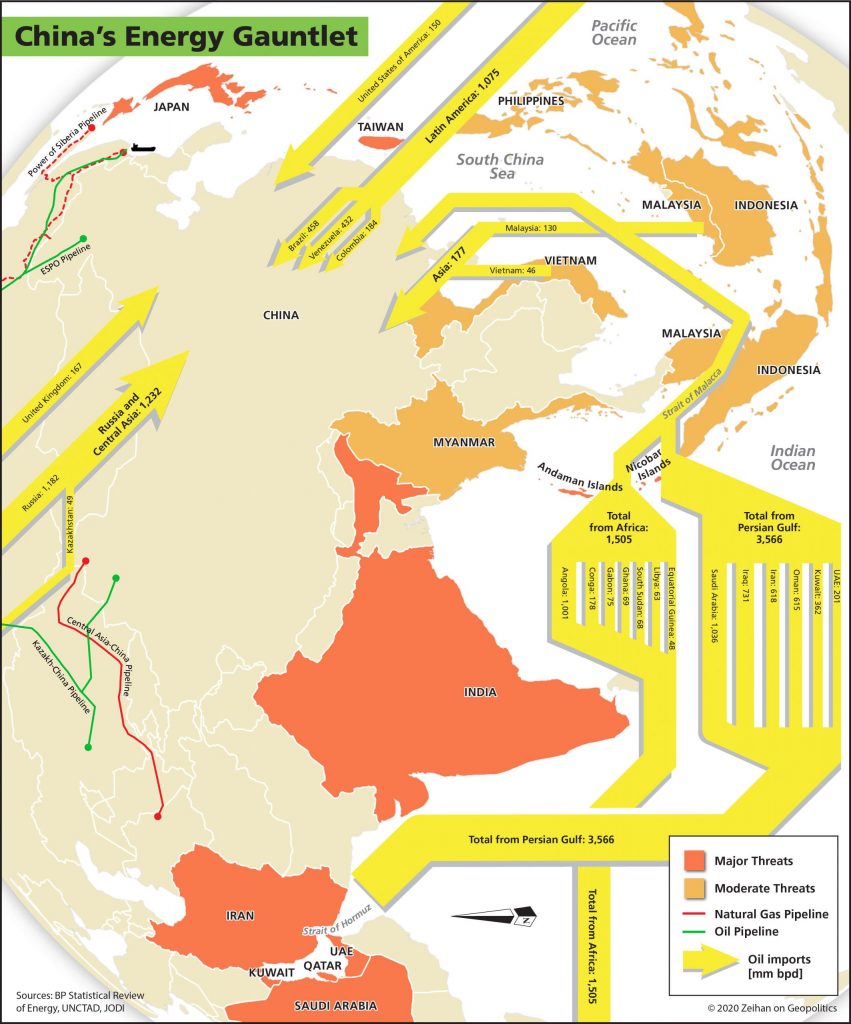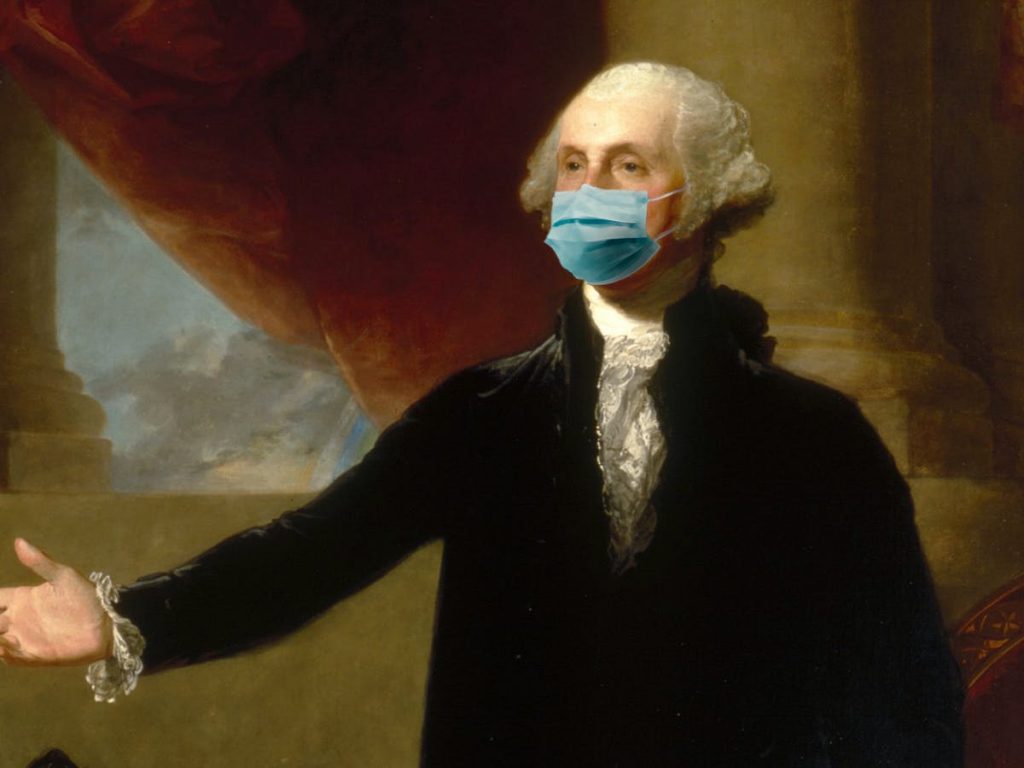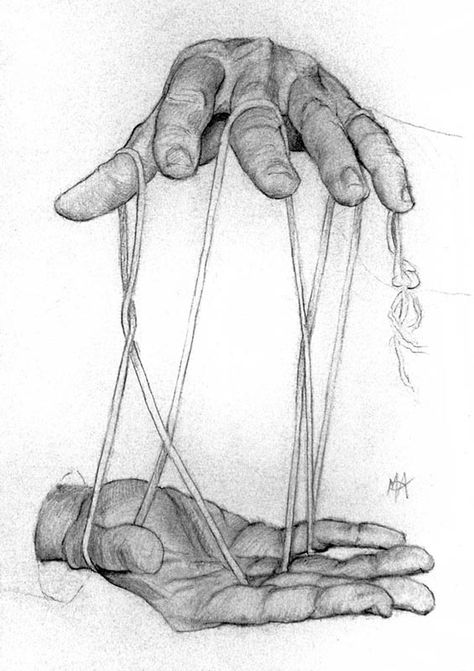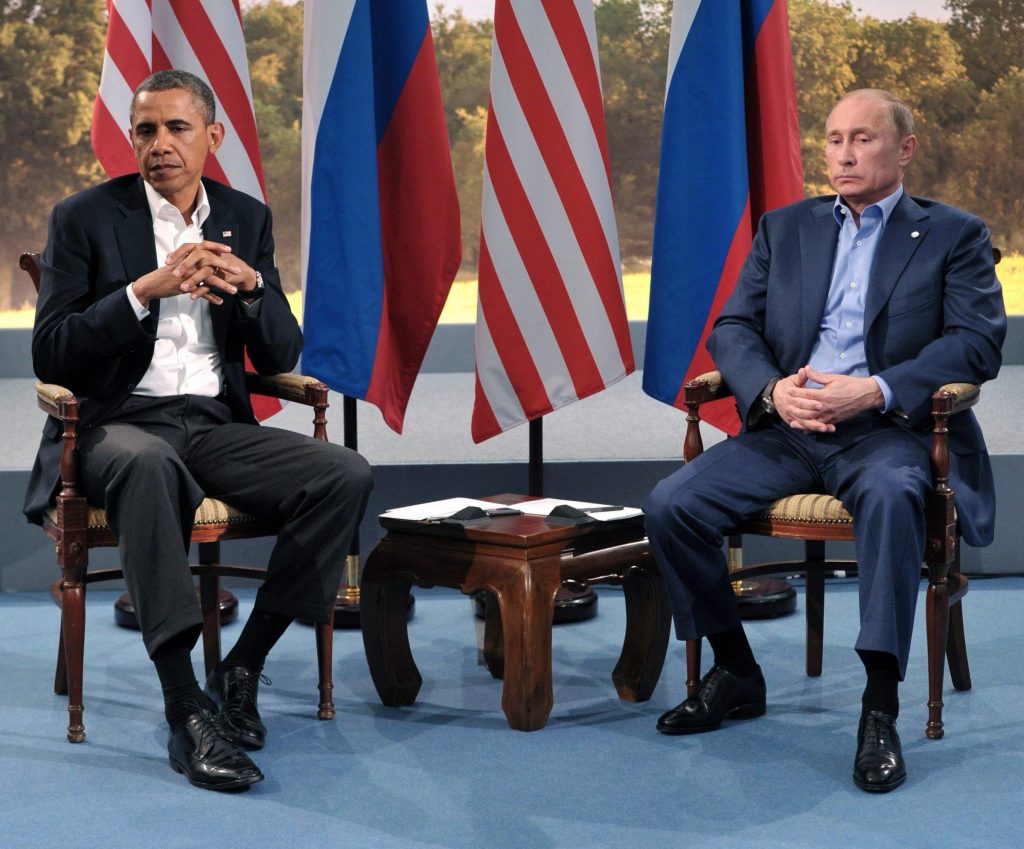
National success requires achieving both continuity and economies of scale. Those big enough to have economies of scale rarely have good borders – think Russia. Those sufficiently isolated to have long continuities rarely have scale – think New Zealand.
The Americans have changed their mind about their alliance and have turned sharply more insular. There is no effort to ride herd. The W Bush administration abused the allies, the Obama administration ignored the allies, and the Trump administration insulted the allies.
Below is a long, quoted passage where Zeihan lays out his perspective that America has merely drifted since the conclusion of the Cold War, bereft of leadership with vision.
The Cold War victors had a bit of a party, and then something curious occurred.
The American policy of global Order was a strategic one, designed as a means of doing battle in a global conflict. With the Cold War over, it was time to rejigger that Order toward a new goal.
With the Soviet fall, American president George HW Bush sensed history calling. He used his unprecedented popularity in the aftermath of the fall of the Berlin Wall and victory in the First Iraq War to launch a national conversation on what’s next. What do the American people want out of this new world? He openly discussed a New World Order, his personal goal being “a thousand points of light,” a community of free nations striving to better the human condition. Bush’s background-he had previously served as vice president, budget chief, party chief, ambassador, House representative, and intelligence guru-made him the right person with the right skill set and the right connections and the right disposition in the right place in the right job at the right time.
So of course the Americans voted him out of office, and all serious talk of moving the Order onto newer footing for the new age, more relevant for the challenges and opportunities of the post-Cold War era, ceased.
American leadership in the years since has been, in a word, underwhelming. Bill Clinton found foreign policy boring and did his best to avoid it. George W Bush became embroiled exclusively in the Middle East. Barack Obama proved so insular he refused to have meetings with, well, anyone-even allies within his own Democratic Party. Donald Trump’s “America First” expressly calls for divorce from the global system.
None of the four picked up the challenge of George HW Bush to reform the Order and build a better world. Nor did any of the four provide the necessary guidance to American military, intelligence, and diplomatic staff as what America’s goals actually are.
With no clear grand strategy, the Americans lurched from crisis to crisis – Haiti to Bosnia to Yugoslavia to Afghanistan to Iraq to Yemen to Syria-with the country’s political, economic, and military elite seeing power as something to be used in an endless march of tactical situations, rather than a tool for shaping the broader picture. For a mix of reasons political, personal, and institutional, there has been a lack of imagination all around.
Bereft of direction from the top, American strategic policy slipped into a thought-free rut. The US Navy continued to provide global maritime security. The American military continued to protect Cold War allies. The American economic system continued to be a sink for global exports. The American system continued to enable all the nuts and bolts of global energy and finance and agriculture and manufacturing.
The only change was the Americans stopped asking for anything in return.
The Order had been so successful, most forgot – or never learned – that it was even there in the first place.
^I certainly never learned. What I learned was globalization as a secular, disembodied, unstoppable, inevitable, righteous force. While America accelerated globalization by providing stability, to some degree globalization would have occurred due to transport technology and the internet even without the added insurance of geopolitical security. Zeihan doesn’t like to admit this.
But the ever-more-wealthy ever-more-connected, ever-more-advanced world lost sight of one central, inconvenient truth: American involvement in the Order isn’t about-was never about-free trade and its subsequent effects as an end. Free trade was the means. Free trade was part of the bribe. […] The Americans forged, operated, and subsidized the free trade Order so that they would have allies to help face down the Soviets. […] With the Order’s strategic rationale gone, the Order has had to justify its continuing existence to the Americans. It has not gone well.
At the time of this writing (2019/2020), the Americans now have fewer troops stationed abroad than at any time since the great depression.
Chinese GDP has expanded by a factor of 4.5 since 2000, but Chinese credit has expanded by a factor of 24. Total debt in China has ballooned to more than triple the size of the entire economy. According to Citigroup, some 80 percent of freshly issued private credit in 2018 globally is in China, while the Conference Board estimates productivity growth (how much you get from what you put in) has declined since 2012. The Economist now estimates three-quarters of the value of new loans does nothing more than pay the interest of loans issued previously. China is spending more and more to get less and less, and it has already resulted in the greatest debt run-up in history.
The rest of the world has seen-repeatedly-where this sort of expansion-at-all-costs development model leads: investment-led bubbles that collapse into depressions. In Japan, it resulted in three lost decades of inflation and near-zero growth. In Greece and Italy, the bubbles generated what are (so far) the largest sovereign debt and banking crises in history. In the United States, runaway lending created Enron and the subprime lending crisis.
I take speculation about how much debt is “too much” with a huge grain of salt after reading some of Ray Dalio’s work, especially when the debt is denominated in the country’s own currency. Nevertheless, it’s interesting to hear someone so bearish on China these days.
One downside of China’s massive population is that the country has less farmland per person than Saudi Arabia.
In one fell swoop, the Americans provided the Japanese with everything Japan had fought for-and ultimately lost-between 1870 and 1945. A position under the American nuclear umbrella was tossed in as a cringe-inducing bonus.
That passage was cringe-inducing but I love that the author was willing to go there.
The first issue is the looming iceberg of Japan’s demographic implosion. The niggardly amount of flatland in Japan that has so shaped the country’s political, agricultural, industrial, and technological history has similarly shaped Japan’s demographic structure.
Once one filters out countries that aren’t really countries (think Monaco) and takes into account the fact that over 80% of Japan’s land is uninhabitable, Japan is the world’s most densely populated and fifth most urbanized country. Cramming everyone into tiny urban condos generates some amazing economies of scale and wonderfully efficient city services, but it makes it damnably difficult to raise children.
Japan is approaching the worker shortage of the twenty-first century in the same way it approached its higher cost structures in the late nineteenth and early twentieth – by being more advanced. Japan is the most technologically advanced society humanity has ever produced, and it continues to push the limits of what humans consider possible.
I found this a little too dismissive of the demographic trend.
In these scenarios China doesn’t so much stew in its own juices as boil in its own blood, and that is before the Communist Party has to make any decisions about how violent it might be in its efforts to preserve a unified China. The last thing on the Chinese mind will be venturing out into the wider, more dangerous world.
Chinese power will dissolve and China itself will likely break up as well, but China has never been a global player – in fact it has rarely even exercised power beyond its current borders. China’s degradation is simply a reversion to the mean.
Zeihan is so incredibly contrarian on China it boggles the mind.
Fascinating geographic factoid:
Russian rivers are so useless as to be largely cosmetic. Those that are navigable tend to flow through useless terrain on their way to emptying into remote, unpopulated seas. Most of them flow north, which sounds innocent until one factors in Russia’s trademark harsh winters.
South flowing rivers in the Northern Hemisphere freeze from their headwaters to their mouths. Snow and ice in the river’s upper reaches do not flow into the river until spring, so during winter the river’s level drops considerably.
In contrast, north-flowing rivers freeze from their mouths to their headwaters, meaning the upriver flows do not necessarily drop, but they flow into a frozen river. […] Eventually the ice accumulates to the point that it forms an ice dam, which forces the semi frozen water up and over the banks. […] If you’re watching from satellite, this entire process is fascinating. If you’re watching from the river banks, you’re dead.
Death rates for Russian males between 15 and 29 were over six times those of the Iraqi men during the American occupation and subsequent civil war.
I wonder what the death rates were for men in prior Empires that disintegrated rapidly? Is it all economics or is a significant part of it soul – loss of status and humiliation?
For countries like Greece, who were burning cash like a Saudi prince on Instagram, reality hit hard – and it brought receipts.
In many ways, the French system takes the two types of racism most prevalent in the United States and applies the worst of both. In the American South, racism takes the form of, “We will mingle, but we are not equal.” In the American North, it is in the vein of, “We are equal, but we will not mingle.” In France, the targets of racism are out of sight and out of mind, consigned to ghettos and at the back of the line as regards government services.
Since World War II, the Middle East’s population has sextupled, putting it far beyond the region’s meager carrying capacity. Anything that disrupts oil flows disrupts income disrupts food supply.
After Brazil broke away from the Empire in 1822, independent Brazil did not simply continue the practice; Brazil expanded it. Best guess is some 4.9 million Africans were sold into Brazilian slavery-more than half the global total. So dependent was Brazil that it did not criminalize slavery until 1888, making it the last country in the hemisphere to do so.
Typical high school American education makes slavery seem almost uniquely American. I didn’t realize Brazil was the biggest sinner in the Western Hemisphere in this domain.
Different geographic and economic features necessitated a different sort of immigrant. In proto- and early America, the limiting factor wasn’t transport or capital, but labor. A horde of hale and hearty immigrants with can-do attitudes (plus a sprinkling of criminals who were not allowed to return to Britain, backed by a far from insignificant number of slaves) fit the bill perfectly. In contrast, the Spanish New World desperately needed capital, and so attracted a cut above: the wealthy, especially those willing to relocate for a shiny new business opportunity. […] Smallholders of the American style were largely unheard of; there is no Spanish version of Little House on the Prairie.
American power is both huge and insulated. Until the rise of the Soviet threat forced the bipartisan unity of the Order, American policy varied with the political passions of the day. Now, with the Order’s end, the United States returns to a more “normal” strategically unfettered state. Predicting French or Turkish or Argentine actions is child’s play compared with guessing what the Americans will do now that they are freed from concerns of context and consequence.
That forces us to do something most students of geography loathe: dive into what actually will guide American foreign policy for the next decade or so. It is time to dissect American domestic politics.
America’s political parties are both stable and weak. They’re stable in that, once a coalition of factions is formed under the umbrella of a party, that party tends to stick around for decades. Each faction’s power can ebb and flow within the party coalitions without disrupting the overall political system. They’re weak in that each faction has its own ideas about what the party should be about, and corralling the factions behind any specific goal requires a great deal of legwork.
America’s two established parties in 2020 are in a state of flux. Factions are not simply rising and falling within the existing parties, but even jumping party affiliation.
The Republican Party is broadly an alliance of six groups: the business community, national-security conservatives, fiscal-primacy supporters, evangelicals, pro-life voters and populists.
The populists have always been the crazy uncle of the Republican alliance, and the other factions have tolerated them only because the populists were wildly disorganized and so provided a vote bank without ever really being able to shape the Republican agenda.
The populist’s previous disorganization meant the rest of the Republican coalition didn’t really have a grip on what the populists were after in terms of policy. Now with the populists calling the shots, the rest of the old Republican coalition is somewhat gobsmacked. The populists’ position on social programs alienates the fiscal conservatives. Their views on national-security policy infuriate the military and intelligence communities. Their immigration goals split the evangelical community down the center. And their thinking about finance and regulations has banished the business community into the wilderness. With the exception of the pro-life voters, the old Republican coalition is completely shattered.
“You can always count on the Americans to do the right thing, after exhausting all other options.” – Churchill
Even more notable is what has happened with the US Navy. Relentless modernization and drawdowns reduced the number of vessels by half even as the number of carriers increased. That forced a concentration of the remaining vessels around the all-important carriers. (Even when not expecting combat, each carrier typically has a dozen escorts.) The Cold War-era Navy of 550-plus ships could fairly reasonably disperse to provide global coverage. Not so in 2020, when the Americans’ naval vessels total fewer than 300 – nearly one-third of which compose the concentrated forces of the carrier battle groups.
Israel may become defined by attributes that are normally associated with pariah states, but without American leadership, international institutions like the United Nations are not likely to continue anyway. Being a pariah doesn’t mean what it used to.
Few recognize just how beneficial and transformative the global Order has been to the world writ large, much less their personal lives.
The Order’s impact has been deep and pervasive, so singularly effective that it suffused itself into every aspect of human existence, nearly erasing every previous structure. Its absence will not be merely non-Order, but instead a new kind of chaos. In the Imperial Age when people were miserable, they were just the same kind of miserable they had always been. But in the Disorder the sense of achievements lost will be palpable. People will remember a degree of security and wealth that they will never be able to achieve on their own.
The Americans are not so much passing the torch as dropping it.
The “America First” of the hard right is reflexively hostile to the world. The “America First” of the hard left is reflexively hostile to American involvement in the world. The “America First” of the middle just finds the world exhausting.
Zeihan has the most unusual and entertaining Acknowledgements section I’ve ever seen. He defends not really citing sources for facts and then describes in prose the sources he found most influential.
I am not a journalist. Journalism is about reporting facts and statements and events, so the criticality of citations is burned into the souls of all good reporters. In contrast, my background is in private intelligence work. Back in the day it was less my job to uncover facts or tell someone’s story, or even to pore over and make sense of a specific region or sector, but instead to weave disparate information flows from every part of the world into a tapestry that demonstrates linkages across systems.
There are some exceptions of course – counter-acknowledgements, if you will: Eurostat and Statistics Canada. Such great data. Such horrible interfaces.Why do you make data mining so painful? And, of course, Russia’s Rosstat. I am hugely thankful for your work. Not for your data, of course. Most of it is absolute crap. Fabricated carp to support the Kremlin’s renewed propaganda campaigns. But, wow, you always good for a laugh!
Peter is a character.
—
Peter Zeihan is a geopolitical strategist with contrarian perspectives grounded in geographic, demographic, and militaristic insights. I first learned of him on Invest Like the Best Podcast by James O’Shaughnessy while hiking the John Muir Trail. His articulate breadth and depth of knowledge compelled me to read his book. Refreshing views but must be taken with some skepticism.
Criticisms: (1) Downplaying how much nukes have changed the territorial security equation. The focus on navies and shipping security is fascinating, but the focus on armies seems dated. (2) Ignoring the impact of culture entirely. (3) Treating demographics (birth rates) as a death knell in some contexts but totally manageable in others (example: Germany vs Japan). (4) Focusing heavily on disruptive technology when looking to the past but not to the future.






